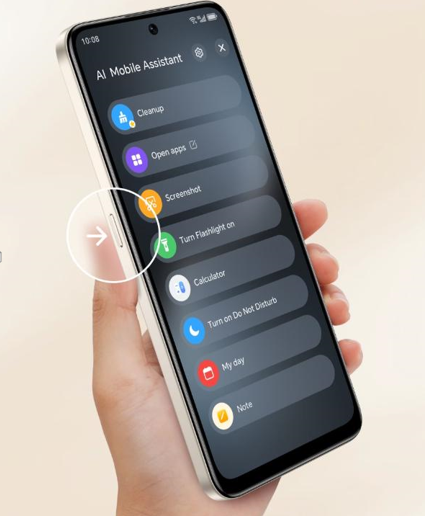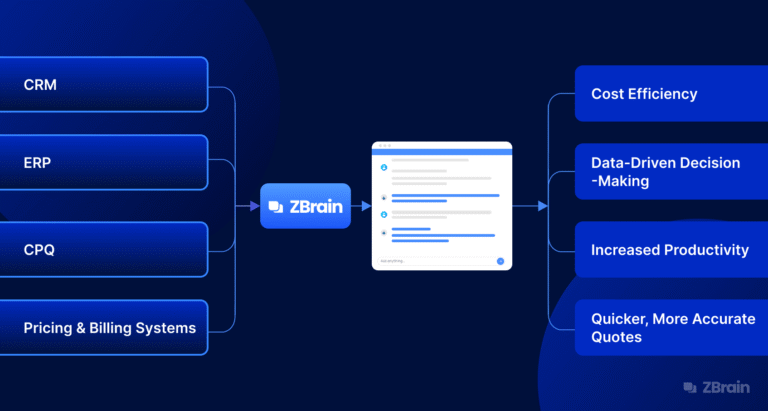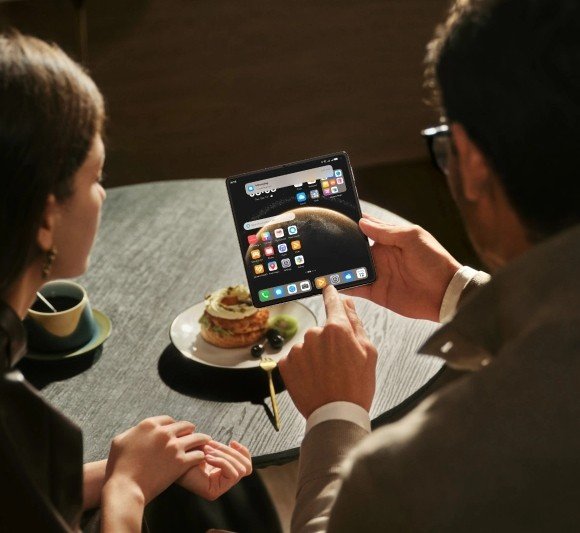Can a Single Button Change How We Use AI on Phones?
A single button could redefine how we interact with AI on our phones. The idea revolves around simplicity, speed, and user-friendly access that revolutionize daily tasks. Imagine bypassing complex commands and menus: a button that activates intelligent functions swiftly. Users can access AI capabilities without hassle, transforming our digital habits. But can this innovation truly change behaviors or just enhance existing trends? This blog delves into how this approach affects our interaction with technology, its advantages, and the hurdles it may face. A small change, like adding a button, could have substantial implications for our phone habits. Devices like the HONOR X7d smartphone showcase how hardware and smart features merge to bring such innovations to life.
How a Single Button Reshapes AI Access?
Simplifying user engagement is a powerful approach to integrating AI. A dedicated button gives immediate access to AI functionalities, streamlining the process. This shift from traditional navigation makes AI more approachable, boosting usability. By removing barriers to use, such a button propels technology towards being more intuitive, urging wider adoption and potentially modifying user behaviors in significant ways.
Instant Trigger vs Menu Navigation
Instant triggers invigorate user experiences by transforming the way people interact with their devices. With just the press of a button, users can bypass lengthy menus and instantly access AI-powered features, saving time and effort. This immediacy is crucial as it enhances efficiency, reduces friction, and significantly boosts satisfaction. Instead of navigating multiple steps, tasks are executed seamlessly, creating a smoother workflow. While menus provide comprehensive options, instant triggers appeal to those who prioritize speed, convenience, and intuitive interaction, marking a pivotal evolution in technology use.
Physical Button vs Voice or Gesture Controls
Physical buttons offer a sense of tactile reassurance that many users still value in an increasingly touch- and voice-driven world. They are straightforward, easy to use, and often feel simpler than relying on voice commands or complex gestures. Not every environment is suited for voice controls, as noise can interfere, and gestures may be misinterpreted. A physical button remains reliable, tangible, and adaptable. It appeals to users who prefer unambiguous, consistent interactions with their devices, providing certainty, tradition, and immediate feedback.
Context-Aware Shortcuts—What Phones Offer Now
Modern smartphones now feature context-aware shortcuts that significantly enhance user interaction. These intelligent shortcuts adapt dynamically to individual usage patterns, creating a more personalized and seamless experience. By learning habits and preferences, they integrate smoothly into daily activities, activating AI functions in ways that feel natural and efficient. While such context-aware systems improve flexibility and productivity, a dedicated button still offers consistency, simplicity, and predictability. Together, these approaches represent a powerful evolution in smartphone design, balancing innovation with user-friendly accessibility.
See also: How Emerging Tech Will Reshape Education by 2030
Benefits Users Get from One-Click AI
Streamlined device engagement promises substantial user benefits. A single click reduces the friction in accessing AI features, potentially accelerating user tasks. This ease of access transforms not only how tasks are accomplished but also how frequently AI is employed, encouraging a shift towards more integrated use of smart capabilities.
Faster Task Completion & Reduced Friction
Speed is one of the most compelling advantages of having direct AI access on a smartphone. With a single press or command, users can complete tasks with minimal friction, whether it’s setting a reminder, drafting a quick message, or accessing more complex functions like navigation or document search. By cutting down the number of steps involved, AI dramatically shortens task completion times, ensuring smoother workflows. This seamless, frictionless experience not only maximizes productivity but also encourages greater engagement with AI as an everyday efficiency tool.
Better Multitasking & Workflow Efficiency
Multitasking greatly benefits from streamlined AI access, where a single dedicated button serves as a gateway to enhanced productivity. Instead of switching between multiple apps or navigating complex menus, users can instantly trigger commands and move effortlessly from one task to another. This reduces the cognitive strain often linked with juggling activities, keeping focus sharp and workflows uninterrupted. By minimizing friction and saving time, the AI button enables smoother orchestration of digital functions, empowering individuals to achieve personal and professional productivity goals with greater ease
Enhanced Assistive Use for Accessibility or Hands-Free Scenarios
Accessibility gains considerably from a dedicated button, as it minimizes the barriers users may face when engaging with their smartphones. With a simple press, individuals can quickly activate assistive technologies such as screen readers, voice commands, or shortcuts to essential apps, fostering greater inclusivity. Hands-free scenarios also become more manageable, enabling smoother interaction with AI features without compromise. This advancement not only supports independence and empowerment but also ensures that technology remains approachable, adaptable, and truly within reach for everyone.

What Determines Whether It Will Really Change Behavior?
Behavioral change hinges on both acceptance and practicality. If users genuinely find the AI button indispensable, they are far more likely to embrace it and form lasting habits around its use. Its success will ultimately depend on how well it simplifies meaningful interactions with AI, turning complex processes into intuitive actions. By making technology feel essential rather than optional, the button bridges the gap between curiosity and usability. This balance will determine whether it evolves into a lasting staple or fades as a passing novelty in smartphone innovation.
Challenges of a Dedicated AI Button
Despite the excitement surrounding dedicated AI buttons, several challenges accompany their adoption. For one, the complexity of functions may overwhelm or confuse users, causing them to ignore the feature altogether. Smartphone makers also face space limitations, making it difficult to justify adding extra hardware without compromising sleek designs. Moreover, integrating an AI button with diverse operating systems and apps introduces compatibility concerns. Unless these hurdles are carefully addressed, the AI button may struggle to deliver its intended value and widespread impact.
Conclusion
A single button has the potential to redefine how we use AI on smartphones. By offering ease, speed, and enhanced accessibility, it brings substantial benefits for both casual users and power users. Yet, its successful integration will depend on overcoming challenges such as user adoption, design compatibility, and practical functionality. As technology continues to evolve, small innovations like a dedicated AI button can profoundly influence how we interact with our devices, shaping smarter, more intuitive, and seamless digital experiences. Whether in advanced flagships or practical mid-range devices like the HONOR X7d, the feature’s value will depend on how effectively it meets user needs.






